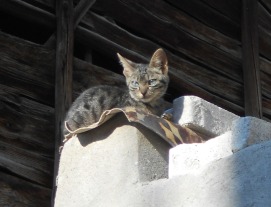Old Malatya Population: 17,000
Alternative name: Battalgazi
***Like Malatya itself, Eski Malatya was battered by the earthquakes of 2023. I have not been back there since although I’ve been told that the precious Ulu Cami survived intact.***
Ten kilometres north of Malatya is the small settlement that was once Eski Malatya (Old Malatya). As the story goes, people had been living here for many centuries until 1838-39 when regiments of the Ottoman army took up residence and local families fled south to protect the honour of their wives and daughters. As the new Malatya grew, so the older settlement shrunk. The result is that it’s forgotten Battalgazi rather than better known Malatya that boasts all the historic monuments.
Battalgazi’s two most important monuments are the Ulu Cami and the Silahtar Mustafa Paşa Kervansarayı but there are more than enough minor, mainly Selçuk, monuments to while away a half a day here.
Around town
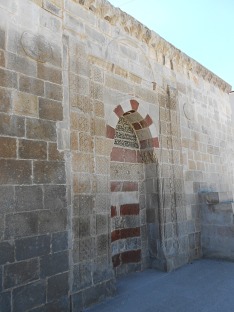
Coming into town you’ll see a large statue of Battal Gazi, a somewhat mysterious Turkish folk hero who is sometimes thought to have lived in the 8th century and sometimes in the 12th. He is generally believed to be buried in Seyitgazi, near Eskişehir. Shortly after that you’ll see on the right-hand side of the road a Selçuk namazgah (open-air praying area), which dates back to 1243. At that time the Silk Road would have passed by the city walls and travellers would have been able to pause here to pray. It’s wonderfully evocative of the past despite the best efforts of the restorers to tidy it up.
After that you’ll start to catch glimpses of the ruins of the extensive walls that used to ring the old city. In most places all that had survived was the rubble infill from the walls and the rough outline of the jutting towers along them. At Kalekapısı one gate and the adjoining towers have been rebuilt but unfortunately in a generic toy-castle style with neat crenellations that are unlikely to be historically correct. Work appears to have been started on these walls right back in the reign of the Emperor Trajan with several rebuildings occurring, including in the reign of the Byzantine Emperor Justinian who was also responsible for rebuilding Ayasofya in İstanbul.
The dolmuş or bus from Malatya will drop you in the centre near to the Silahtar Mustafa Paşa Kervansarayı, a large caravanserai dating back to 1637 which was built for the sword-bearer to Sultan Murad IV but has now been completely rebuilt. For those who relish the softening patina of age that clings to ancient structures, its stark new appearance makes for sorry viewing with only the one long main hall with its 30 chimneys really evoking the past. That said, it seems to be quite well used for craft workshops and classes of all types.
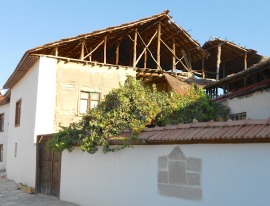 Just off the main square don’t miss the newly restored Sanat Sokağı (Art Street, officially Prof. Dr. Metin Sözen Sokağı), a pretty pedestrianised street lined with fine old houses, many with elaborate wooden lofts which once served a multitude of storage purposes. Now the walls have been decorated with pieces of ceramic art. It’s a great place in which to while away a half-hour or so.
Just off the main square don’t miss the newly restored Sanat Sokağı (Art Street, officially Prof. Dr. Metin Sözen Sokağı), a pretty pedestrianised street lined with fine old houses, many with elaborate wooden lofts which once served a multitude of storage purposes. Now the walls have been decorated with pieces of ceramic art. It’s a great place in which to while away a half-hour or so.
You may have to ask for directions to Battalgazi’s most precious monument, the magnificent Ulu Cami which dates back to 1224 when it was built for the Selçuk Sultan Alaeddin Keykubad. The mosque has also been restored but with a great deal more success so that it’s now possible to recognise its unique (for Anatolia) design with four iwans set around a courtyard, an arrangement common in Iran and a reminder of the origins of the Selçuks. Restoration has resulted in the glassing-in of two of the sides and the rebuilding of the others.
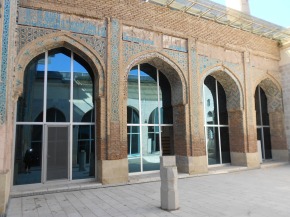
The glass will certainly not suit purists although it does mean that as you move around the courtyard the beautiful turquoise-and-navy designs on the tiles surrounding the arches are reflected back in every direction. I found it very moving and am surprised the mosque isn’t better known.
Inside, it is the usual Selçuk sea of stone arches with all the decorative attention focused on the domed area around the mihrab. Beside it the mimber is a splendid piece of woodwork, as beautiful as anything I can remember in other mosques. The information on site suggests that the original is in the Ankara Ethnography Museum but I was left unsure whether it had been returned here, so lovely was the wooden carving which includes crown-like ornaments and even vases of flowers. 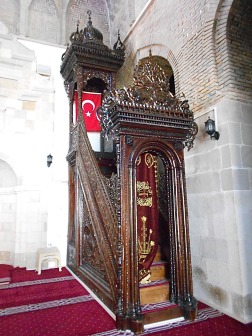
Across the road the Şahabiye Kubra Medresesi lies in ruins with the single minaret of the Halfetih Cami beckoning behind it together with a simple shrine to an evliya (holy man).
 Elsewhere in town you might like to look out for the 14th-century Kanlı Kümbet (Bloody Tomb), a curious domed monument which has been reroofed but whose precise purpose remains unclear.
Elsewhere in town you might like to look out for the 14th-century Kanlı Kümbet (Bloody Tomb), a curious domed monument which has been reroofed but whose precise purpose remains unclear.
Believed to date back to 1890, the elegant Poyraz (Ertunan) Konağı was turned into a living history museum in 2020. Previously it had served as a belediye building and a schoolhouse.
Sleeping
For the time being your best bet is to return to Malatya for a good choice of places to stay. 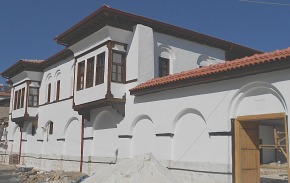
Transport info
Frequent dolmuşes and buses leave from the main Orduzu bus stop on the Çevre Yolu (Ring Road) at Akpınar in Malatya.
Day trip destinations
